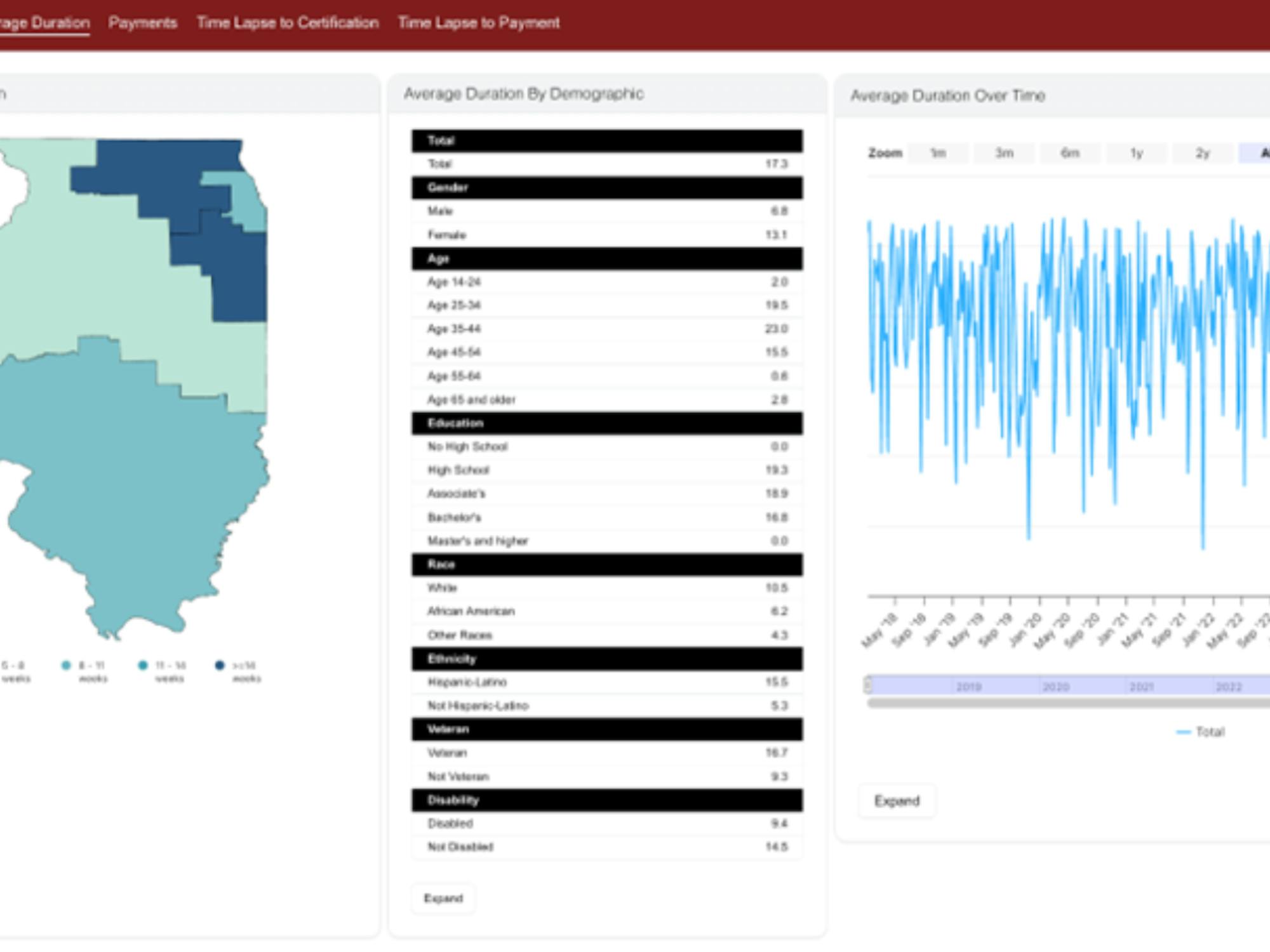
23 Sep 2025
In the news
Improving Access to Vital Data: How We Partnered with the Illinois Department of Economic Security
The Challenge: Navigating Complex Data Access and Security Barriers
The Illinois Department of Employment Security (IDES) oversees the state’s unemployment insurance programs and labor market information. It struggled with a fragmented and resource-intensive process for managing data requests and research projects. Each request required lengthy legal reviews, needlessly customized data-sharing agreements and unique security procedures, often causing significant delays and bottlenecks. This patchwork approach made it difficult to efficiently share sensitive information while ensuring strict privacy and compliance.
Enabling Faster, More Secure Data Access
The Administrative Data Research Facility (ADRF)–our FedRAMP-authorized computational research platform–has transformed how IDES accesses, governs, and shares data.
- All data is de-identified and governed by strict privacy protocols, ensuring compliance while enabling secure collaboration with agencies and researchers.
- The development of centralized, shared legal templates and uniform data definitions enable IDES to access consistent, high-quality datasets across the board.
- Interactive data dashboards allow researchers to analyze granular, de-identified data, leadership to make more informed strategic decisions, and field staff to access localized insights and better address labor market shifts.
- Illinois implemented a tiered access system for its unemployment to reemployment dashboards to balance data security with the need for timely, actionable insights.
- The agency’s reach extends beyond Illinois, enabling cross-state research with Missouri, Indiana and others.
Accelerating Research and Driving Data-Informed Policy
We have significantly expanded IDES’s research and data capabilities, driving efficiencies in nearly every area of the team’s work. The agency’s Labor Market Information Director, Marty Johnson, stated, “We cut time spent managing research requests by over 30%, which enabled a 10-15% increase in approved projects, all without sacrificing oversight or security. A workforce program evaluation that had been stalled for more than a year was completed in just weeks thanks to these improvements.”
Other key outcomes include:
- Streamlined legal reviews through standardized agreements
- Enhanced cross-agency and cross-state data sharing
- Real-time, data-driven support via tiered-access dashboards
- Empowered local labor economists with regional data insights
- Recognition as a national model for data governance and collaboration